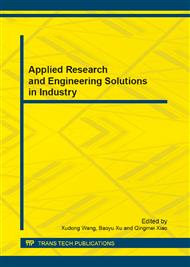p.37
p.42
p.47
p.51
p.55
p.60
p.66
p.69
p.74
Research on Three-Dimensional Structure Optimization for Fir-Tree Root and Rim of Turbine Blade with Complex Damping Structure
Abstract:
The research on structure optimization for the fir-tree root and rim of a steam turbine blade with complex damping structure was conducted by three-dimensional contact finite element method and mathematical optimization algorithm. A multi-variable parametric model of three turbine blades and rims with fir-tree root and rim was established. Twelve critical geometrical variables of the root-rim were optimized to minimize the maximum equivalent stress of the root-rim. The optimal structure of the fir-tree root-rim was finally obtained through the optimization process and the equivalent stress of the root and rim both had evident reductions, Compared with the initial structure, the maximum equivalent stress of the root and rim reduced by 13.47% and 12.26%, respectively. Relevant work is expected to support the design of turbine blade root-rim in theory and improve the operation reliability of turbo-machinery to some extent.
Info:
Periodical:
Pages:
55-59
Citation:
Online since:
February 2013
Authors:
Price:
Сopyright:
© 2013 Trans Tech Publications Ltd. All Rights Reserved
Share:
Citation:


